The Duda's and Finch's Set Sail With Us On The Beautiful Saturday 1/5/2013

Fun With Family And Friends

Click for full size picture (2400 x 1800 px)
We Dined At PF Chang's.. A Great Way To Start The Day
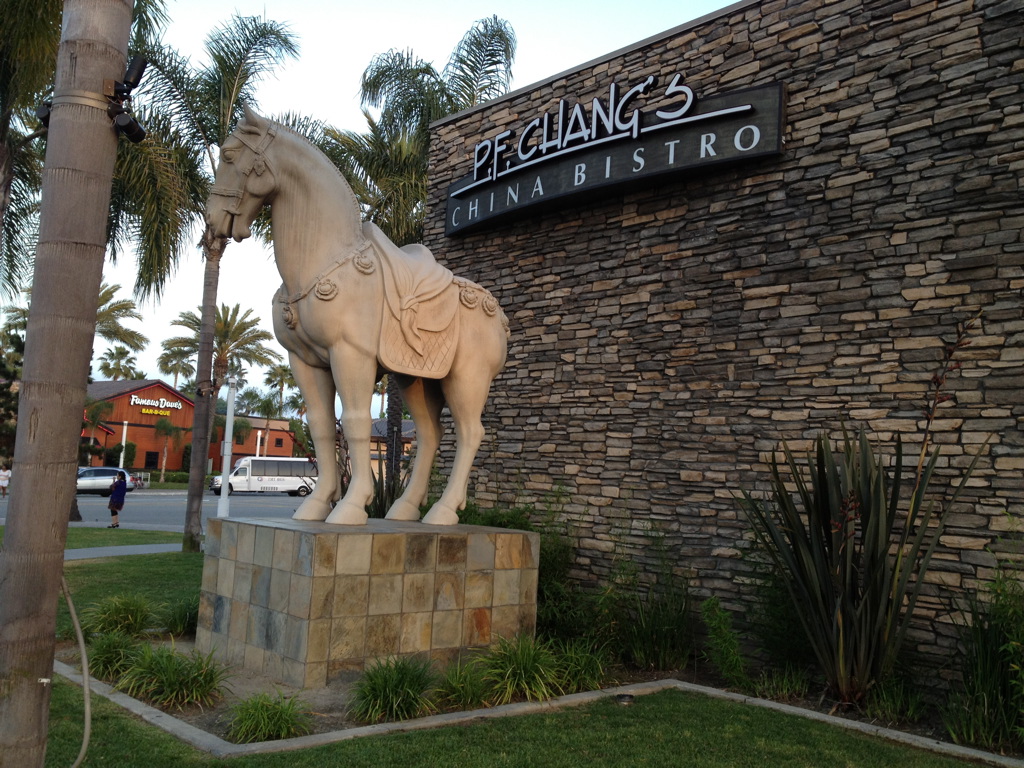
A Few Steps Away... Rainbow Harbor And The Tall Ships
The Grays Harbor Historical Seaport Authority's mission is to provide educational, vocational, recreational and ambassadorial activities and experiences that promote and preserve the maritime history of Grays Harbor, the Pacific Northwest, and our nation while serving the needs of the community. Visit their site.

Hawaiian Chieftan (Left) and Lady Washington (Right)
The Chieftan Explained

Did You Know? - The topsail ketch Hawaiian Chieftain is a replica of a typical European merchant trader of the turn of the nineteenth century. Her hull shape and rigging are similar to those of Spanish explorer's ships used in the expeditions of the late 18th century along the Washington, Oregon, and California coasts.
Built of steel in Hawaii in 1988 and originally designed for cargo trade among the Hawaiian Islands, Hawaiian Chieftain's design was influenced by the early colonial passenger and coastal packets that traded among Atlantic coastal cities and towns.
The coastal packet service was part of the coasting trade based on mercantile activity of the developing seaboard towns. The early packet ships were regular traders and were selected because they sailed remarkably well and could enter small ports with their shallow draft. Out of the gradual development of the Atlantic packet ship hull form came the ship design practices that helped produce some of the best of the clipper ships of the later 1850s.
Purchased in 2004 by the Grays Harbor Historical Seaport Authority, the Hawaiian Chieftain joins the Lady Washington, the Official Ship of the State of Washington, in educational cruises and ambassadorial visits along the west coast throughout the year. Hawaiian Chieftain also makes solo port visits as a sail training and education vessel.
The Lady Washington Explained
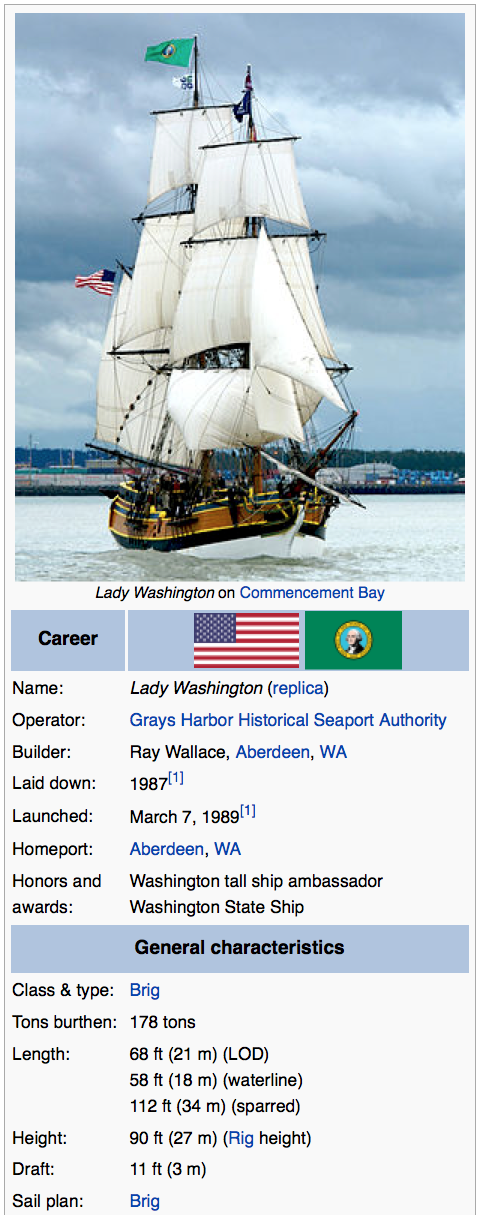
Did You Know? - Launched on March 7, 1989, the Lady Washington was built in Aberdeen, Wash., by Grays Harbor Historical Seaport Authority, a 501(c)(3) not-for-profit public development authority. The new Lady Washington is a full-scale reproduction of the original Lady Washington.
Built in the British Colony of Massachusetts in the 1750s, the original vessel carried freight between colonial ports until the American Revolutionary War, when she became an American privateer. In 1787, after the war, she was given a major refit to prepare her for a unprecedented trading voyage around Cape Horn. In 1788, she became the first American vessel to make landfall on the west coast of North America.
A pioneer in Pan-Pacific trade, she was the first American ship to visit Honolulu, Hong Kong and Japan. Lady Washington opened the black pearl and sandalwood trade between Hawaii and the Orient when King Kamehameha became a partner in the ship.
The modern Lady Washington was thoroughly researched by historians and constructed by skilled shipwrights. She was launched as part of the 1989 Washington State Centennial celebration. The new Lady Washington meets all of the U.S. Coast Guard safety requirements for a 21st-century ship.
Let's Go Sailing
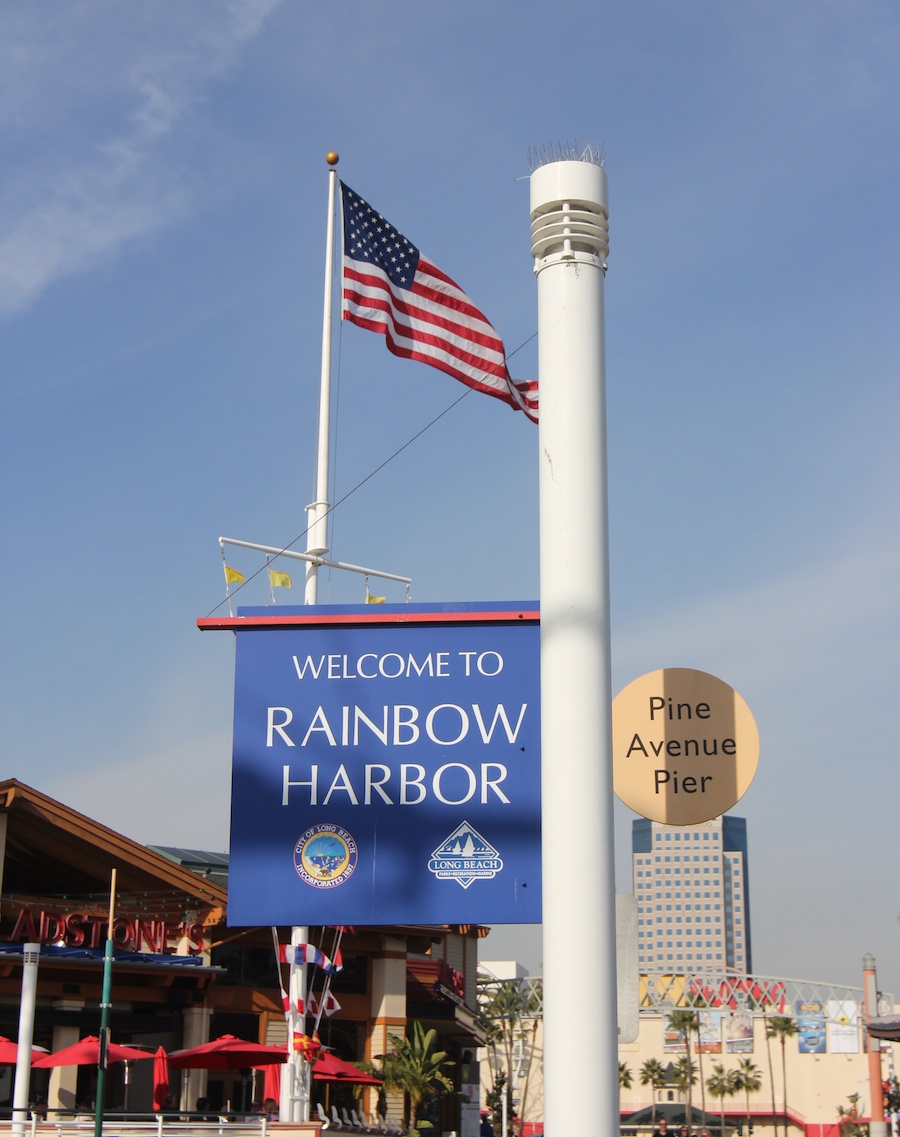


We are waiting to board the 2:00-5:00 battle sail!
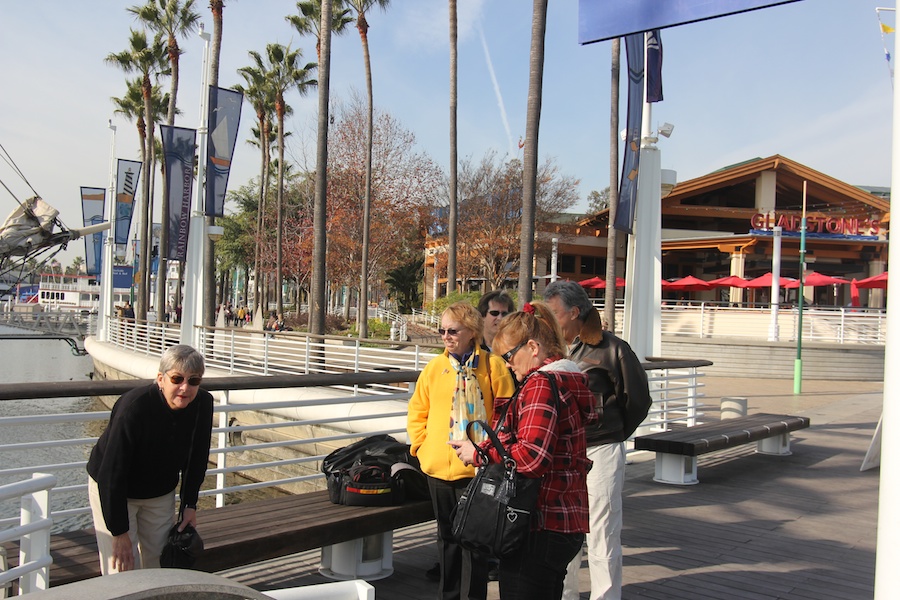
Sue explains what is about to happen....

The crew is finishing lunch below decks
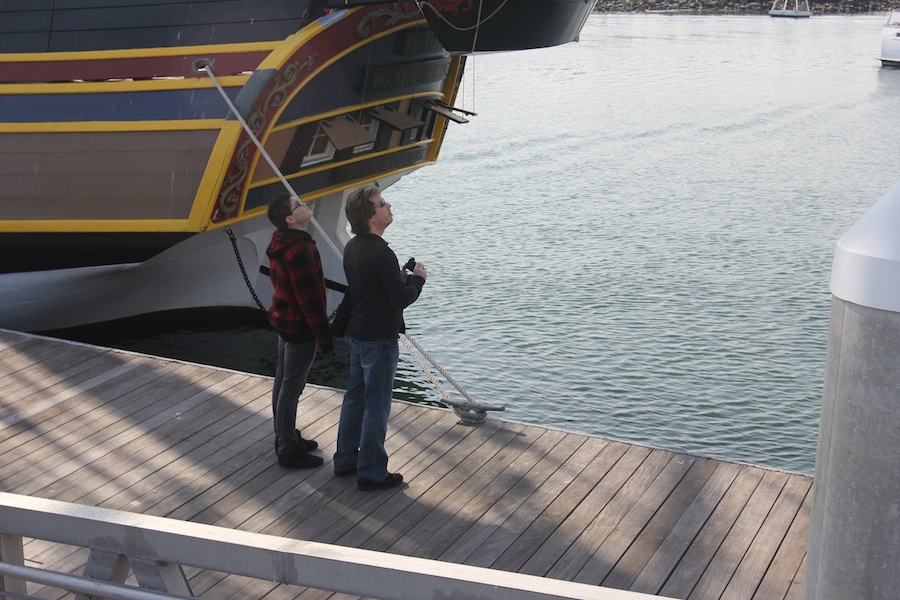
Bob and Nick investigate closer

The flag (ensign) is in place
Did You Know? - An ensign is a national flag when used at sea, in vexillology, or a distinguishing token, emblem, or badge, such as a symbol of office in heraldry. The word has also given rise to the military rank of "ensign", a rank of junior officer once responsible for bearing the ensign.
Vexillology is the "scientific study of the history, symbolism, and usage of flags or, by extension, any interest in flags in general" (Smith 31) The word is a synthesis of the Latin word vexillum ("flag") and the Greek suffix -logy ("study"). It is formally defined by the International Federation of Vexillological Associations (FIAV) constitution as "the creation and development of a body of knowledge about flags of all types, their forms and functions, and of scientific theories and principles based on that knowledge."
The term was conceived in 1957 by the American scholar and vexillologist Whitney Smith and first appeared in print in 1959
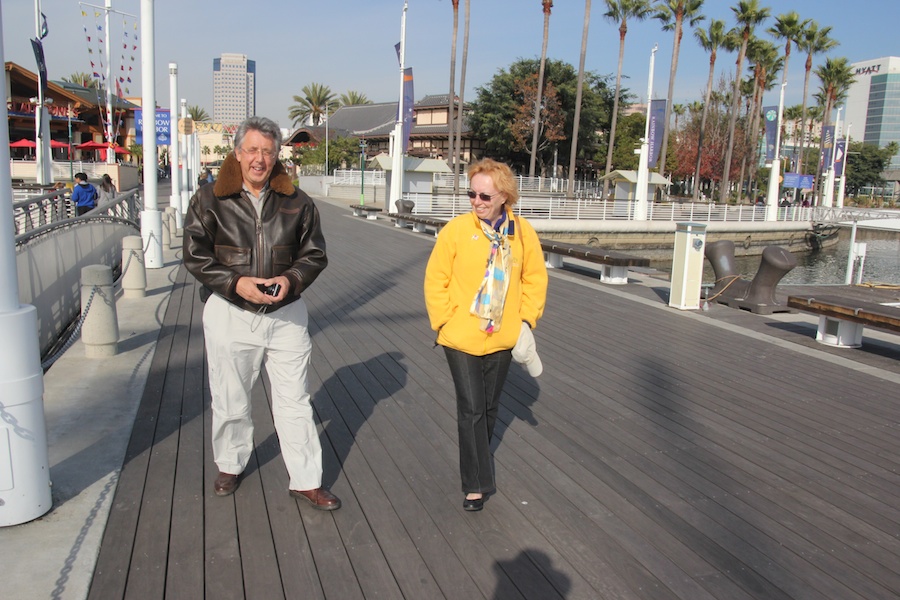
"Hey... Don't leave without us!"


We do have a bit of a breeze this afternoon... That is good
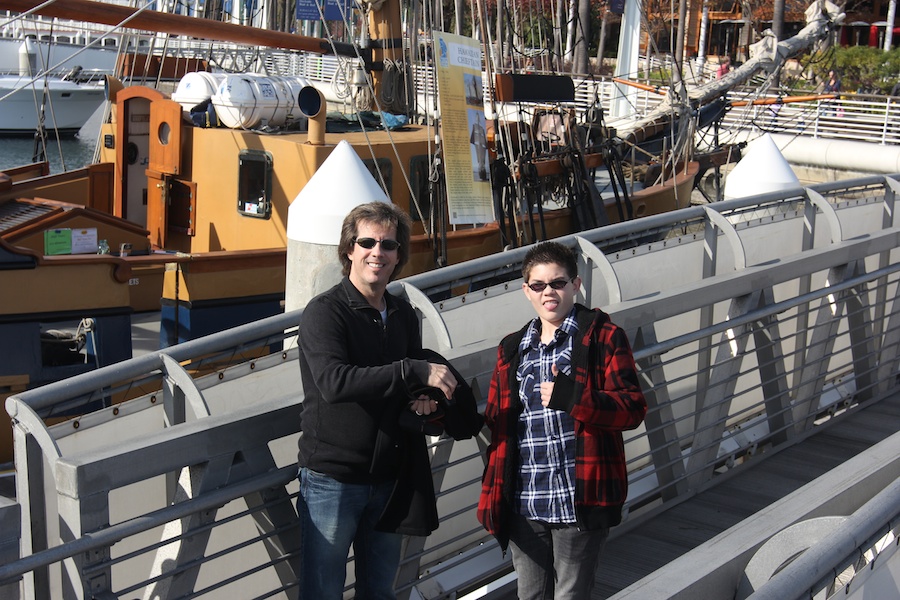
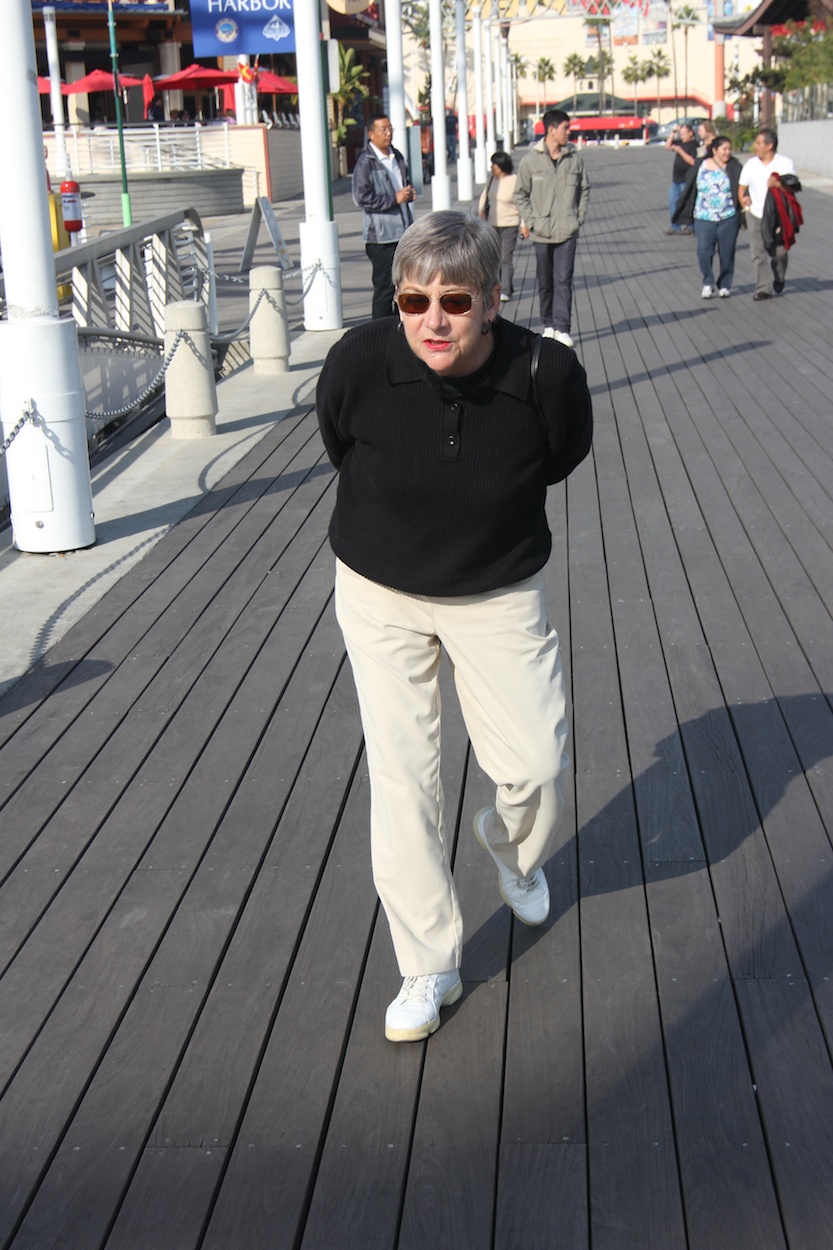
"Hey guys... I have the tickets!"

Everything is "Ship Shape"
Did You Know? - The saying"Ship Shape" in today's form has been recorded as early as 1840 ("shipshape" alone being about 200 years older). The term developed most likely in view of the port of Bristol which had (before the Floating Harbour was constructed) a very high tidal range of 13 metres (43 ft), the second highest in the world.
Ships moored in this area would be aground at low tide and, because of their keels, would fall to one side. If everything was not stowed away tidily, or tied down, the results were chaotic and cargo could be spoiled.

The lines are in excellent shape
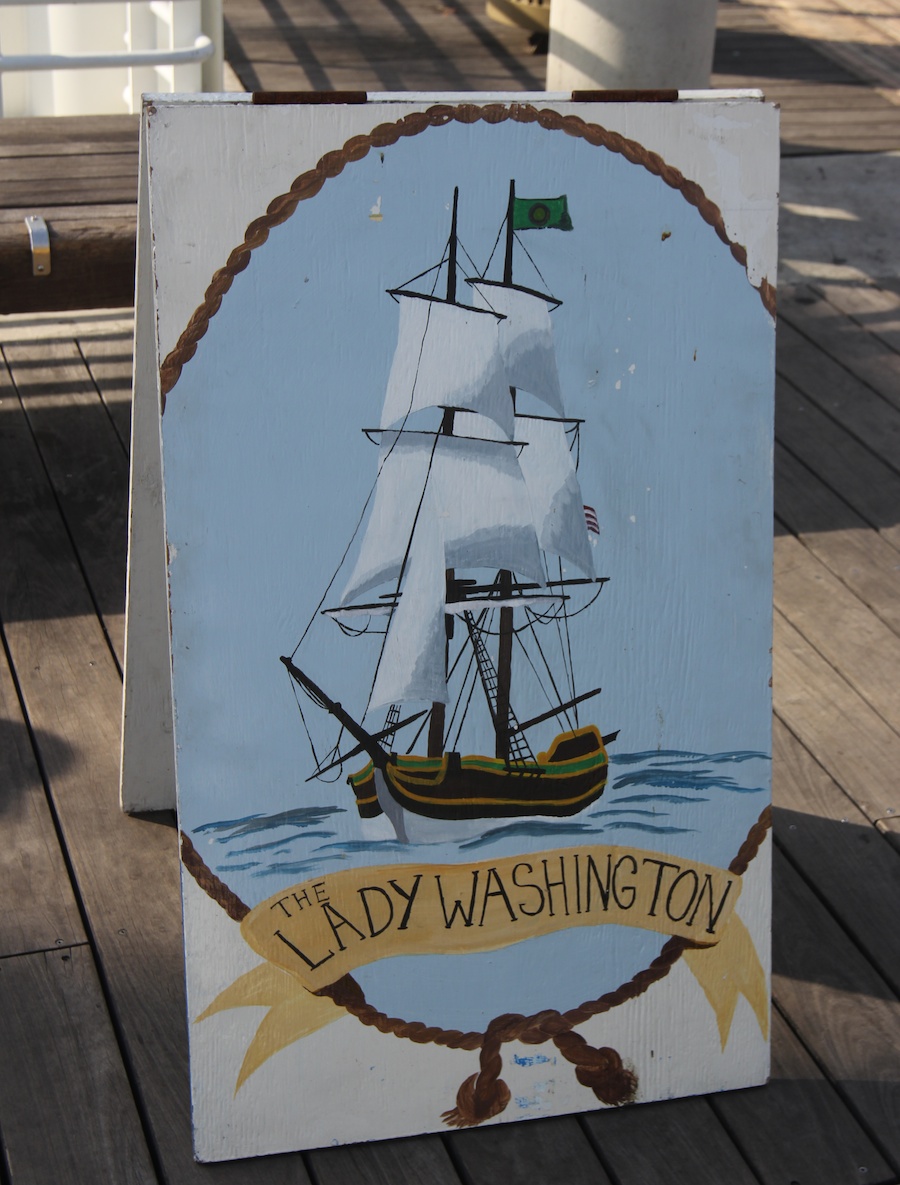
We decided to take the Hawaiian Chieftan... Better places to sit
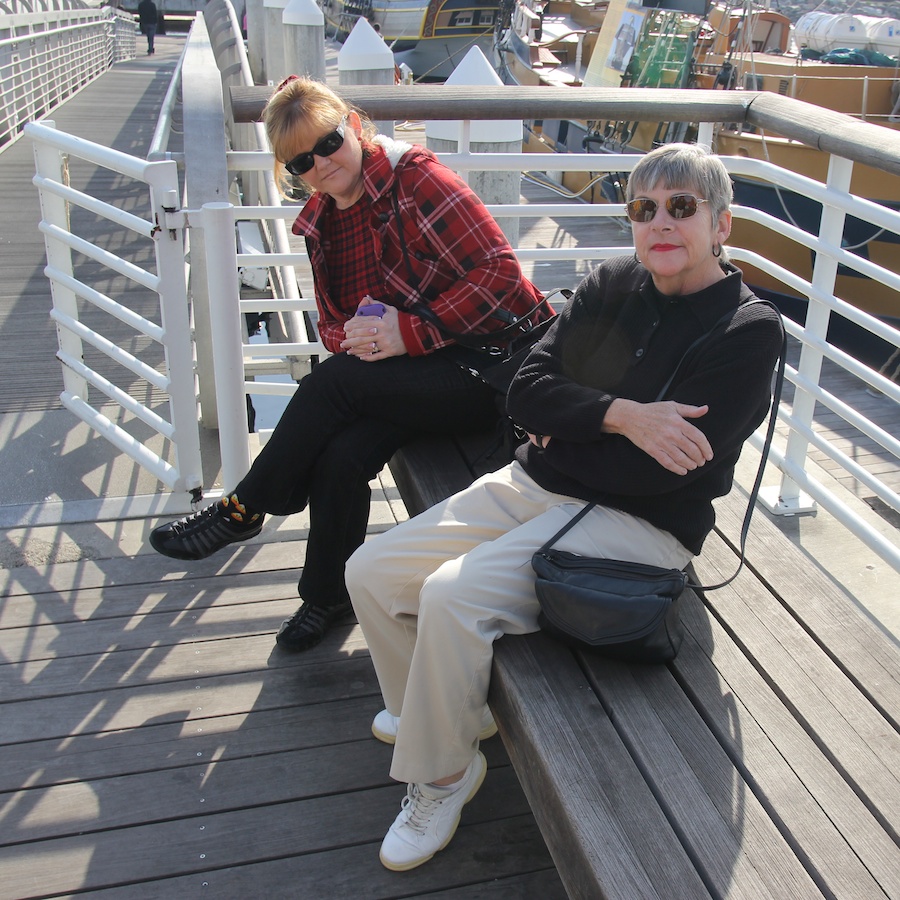
Patiently awaiting our boarding instructions

OK... We are ready

Ready, willing and mostly able
We Are Now Boarding

Here we come, ready or not!
Did You Know? - Boarding, in its simplest sense, refers to the insertion on to a ship's deck of individuals. However, when it is classified as an attack, in most contexts, it refers to the forcible insertion of personnel that are not members of the crew by another party without the consent of the captain or crew. Boarding may be carried out during wartime by naval infantry in an attempt to seize and possibly destroy the vessel, or it may occur in peacetime by pirates and other criminals, or as a means of inspection by a nation's coast guard (or navy) to prevent piracy and smuggling.

We are getting our instructions... Safety first
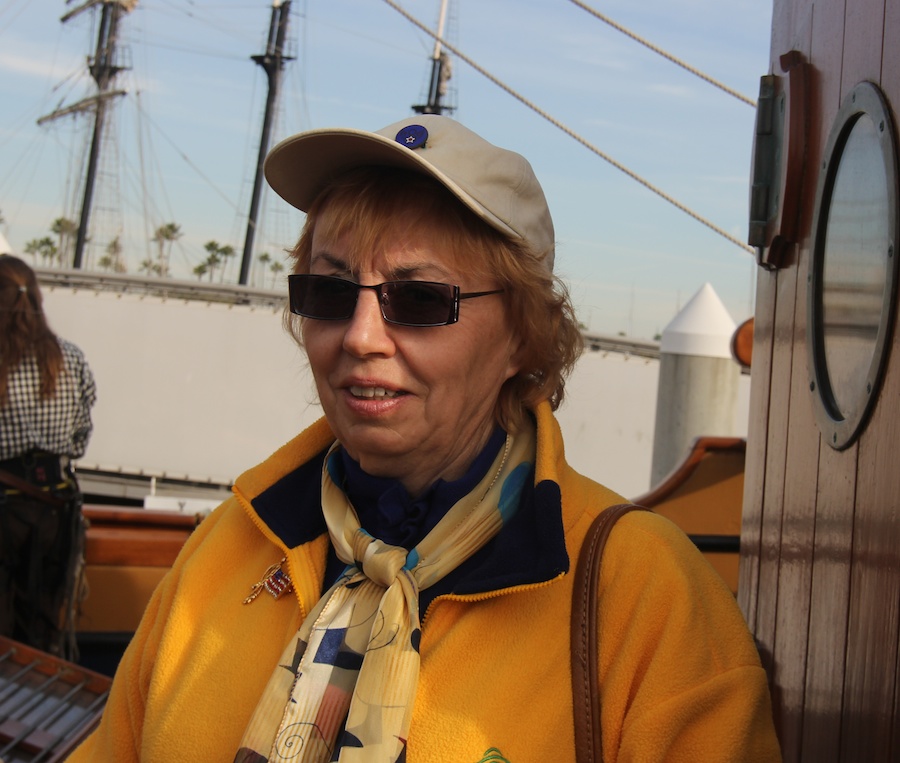
"What do you mean no loo on board???"
Did You Know? -
The origin of the (chiefly British) term loo is unknown. According to the OED, the etymology is obscure, but it might derive from the word Waterloo. The first recorded entry is in fact from James Joyce's Ulysses (1922): "O yes, mon loup. How much cost? Waterloo. Watercloset".
Other theories are:
- That it derives from the term "gardyloo" (a corruption of the French phrase gardez l'eau (or maybe: Garde de l'eau!) loosely translated as "watch out for the water!") which was used in medieval times when chamber pots were emptied from a window onto the street. However the first recorded usage of "loo" comes long after this term became obsolete.
- That the word comes from nautical terminology, loo being an old-fashioned word for lee. The standard nautical pronunciation (in British English) of leeward is looward. Early ships were not fitted with toilets but the crew would urinate over the side of the vessel. However it was important to use the leeward side. Using the windward side would result in the urine blown back on board: hence the phrases 'pissing into the wind' and 'spitting into the wind'. Even now most yachtsmen refer to the loo rather than the heads.
- That the word derives from the 17th century preacher Louis Bourdaloue. Bordaloue's sermons at the Saint Paul-Saint Louis Church in Paris lasted at least three hours and myth has it that wealthier ladies took along "travelling" chamber pots that could be hidden under their dresses whenever the need arose to avoid the need to leave. Due to the popularity of the myth the bowls became known as Bordaloues after the preacher and the name became corrupted to portaloos and sometimes just plain loos due to the habit of shortening words in slang.
- Let us not forget the enemies of England. Armies have a colorful way of immortalising their vanquished foes. When Napoleon's army was finally defeated at "WATERLOO" soldiers would commemorate the victory by doing their business in the waterLOO.

"Lou? I thought it was the captains first name??"
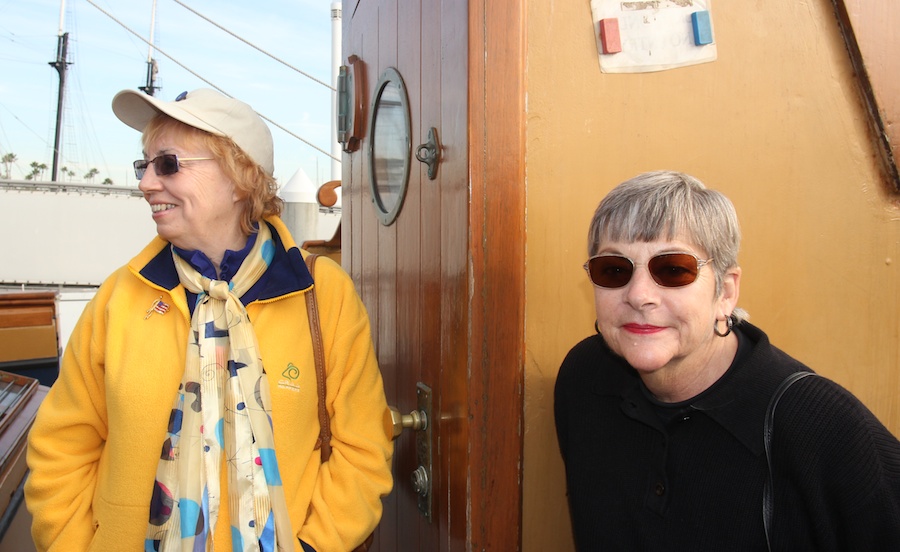
It's OK... The loo is available upon an emergency request

We are safely on board and about to depart the dock
Did You Know? - A dock (from Dutch dok) is a human-made structure or group of structures involved in the handling of boats or ships, usually on or close to a shore.
However, the exact meaning varies among different variants of the English language. "Dock" may also refer to a dockyard or shipyard where the loading, unloading, building, or repairing of ships occurs.
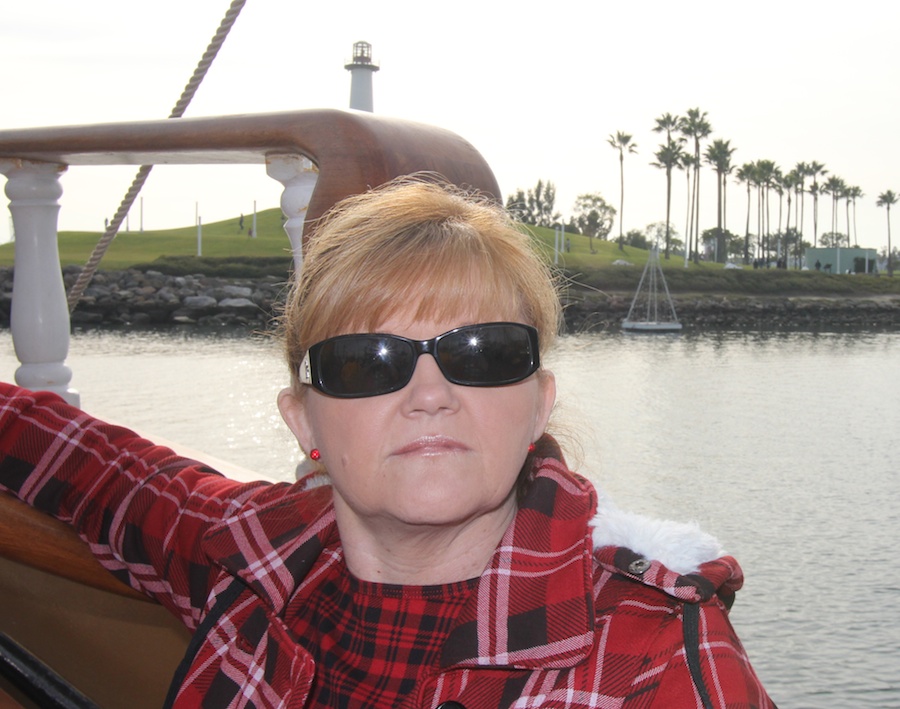
Hollywood is ready to go....

The Purser for todays voyage
Did You Know? - A ship's purser (also purser or pusser) is the person on a ship responsible for the handling of money on board. On modern merchant ships, the purser is the officer responsible for all administration and supply; frequently the cooks and stewards answer to them as well.
Heading Out.... Lady Washington Went First

The Queen looks on....
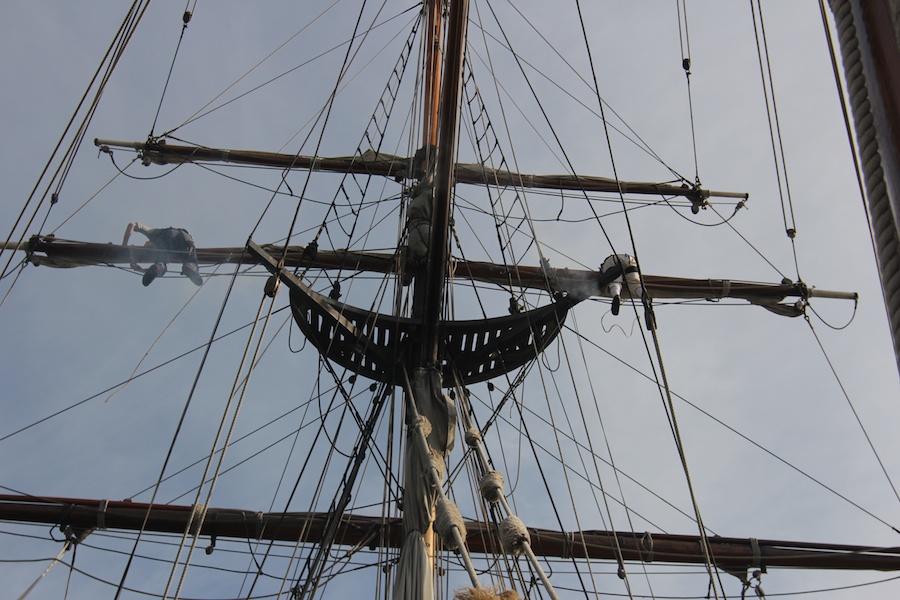
Look carefully for the crew unfurling the sails




We are catching up

"Aarh"

Down come the sails
Did You Know? - "Sea-Fever" first appeared in Salt-Water Ballads – Masefield's first volume of poetry published in 1902 in London by Grant Richards.
I must down to the seas again, to the lonely sea and the sky,
And all I ask is a tall ship and a star to steer her by,
And the wheel's kick and the wind's song and the white sail's shaking,
And a grey mist on the sea's face and a grey dawn breaking.
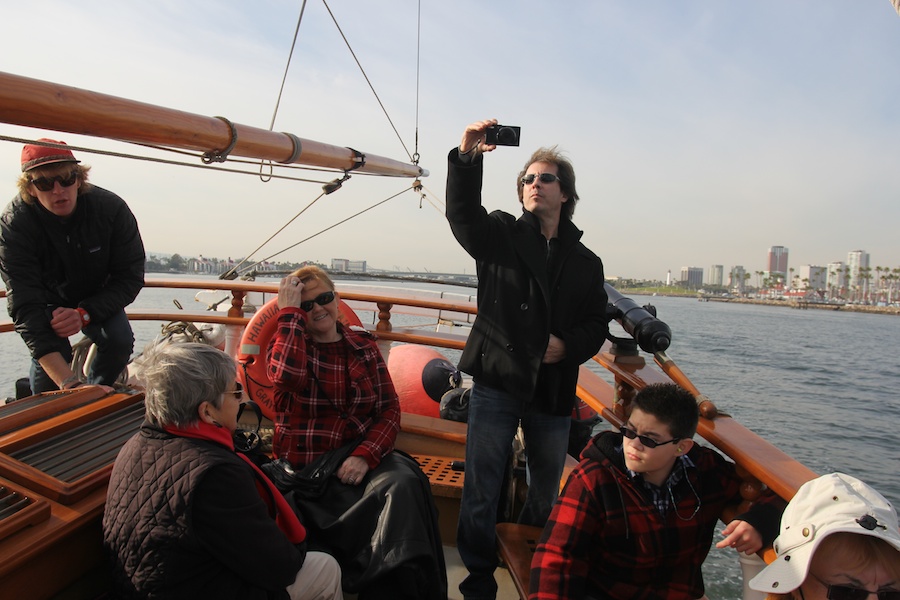
Bob captures the moments

Sailing by the Queen Mary is awesome

"Look... I got a picture of a flying fish!"
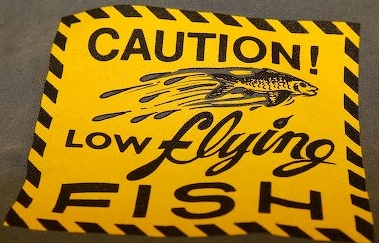
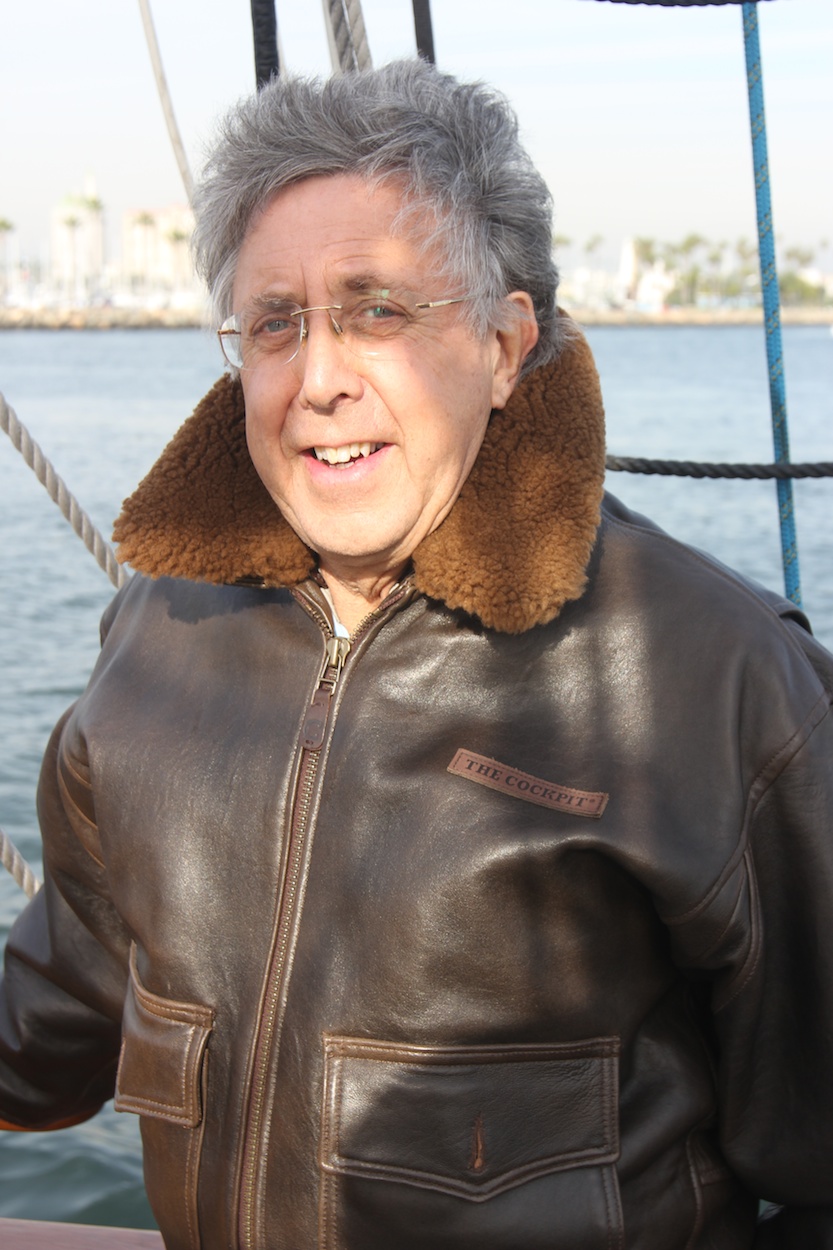
"I am glad I brought the big coat!!"

A view looking back to the Long Beach skyline

The Lady is dropping her sails and about to get under sail
OK...Which One Is US???

We are a brig
Did You Know? - A brig is a sailing vessel with two square-rigged masts. During the Age of Sail, brigs were seen as fast and maneuverable and were used as both naval warships and merchant vessels. They were especially popular in the 18th and early 19th centuries. Brigs fell out of use with the arrival of the steam ship because they required a relatively large crew for their small size and were difficult to sail into the wind. They are not to be confused with a brigantine which has different rigging. In the narrow technical field of sailing rigs, a brig is distinct from a three-masted ship by virtue of only having two masts.

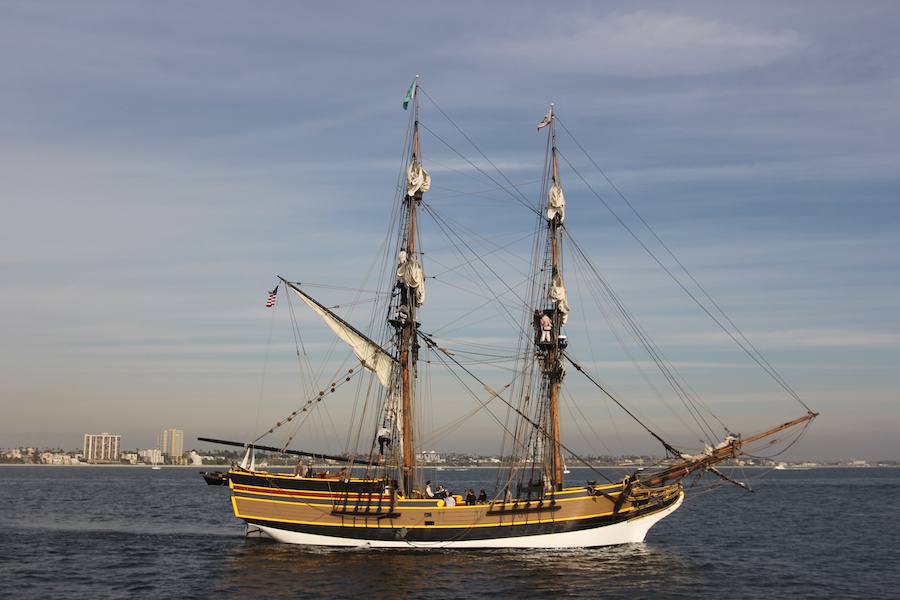
The crew is all over the masts...
Did You Know? - Brigs were used as small warships carrying about 10 to 18 guns.[5] Due to their speed and maneuverability they were popular among pirates (though they were rare among American and Caribbean pirates). While their use stretches back before the 17th century, one of the most famous periods for the brig was during the 19th century when they were involved in famous naval battles such as the Battle of Lake Erie.
In the early 19th century the brig was a standard cargo ship. It was seen as "fast and well sailing", but required a large crew to handle its rigging. While brigs could not sail into the wind as easily as fore and aft rigged vessels such as schooners, a trait that is common to all square-rigged ships, a skilled brig captain could "manoeuvre it with ease and elegance; a brig could for instance turn around almost on the spot".
A brig's square-rig also had the advantage over a fore and aft rigged vessel when travelling offshore, in the trade winds, where vessels sailed down wind for extended distances and where "the danger of a sudden jibe was the large schooner-captain's nightmare". This trait later led to the evolution of the barquentine.
The need for large crews in relation to their relatively small size led to the decline of the production of brigs. They were replaced in commercial traffic by gaffsail schooners (which needed fewer personnel) and steam boats (which did not have the windward performance problems of square rigged ships).

Father and son... Life is good

Serious teasing underway

Keep the hoodie up... Otherwise we hear a whistling sound

The Duda family

The trusty scarf is out
Did You Know? - Ancient Rome is one of the first origins of the scarf, where it was not used to keep warm, but to keep clean. It was called the sudarium, which translates from Latin to English as "sweat cloth", and was used to wipe the sweat from the neck and face in hot weather. They were originally worn by men around their neck or tied to their belt. Soon women started using the scarves, which were made of cloth and not made of wool, pashmina, or silk, and ever since the scarf has been fashionable among women.
Historians believe that during the reign of the Chinese Emperor Cheng, scarves made of cloth were used to identify officers or the rank of Chinese warriors.
In later times scarves were also worn by soldiers of all ranks in Croatia around the 17th century. The only difference in the soldiers' scarves that designated a difference in rank was that the officers had silk scarves whilst the other ranks were issued with cotton scarves. The men's scarves were sometimes referred to as "cravats" (from the French cravate, meaning "Croat"), and were the precursor of the necktie

A beautiful sight
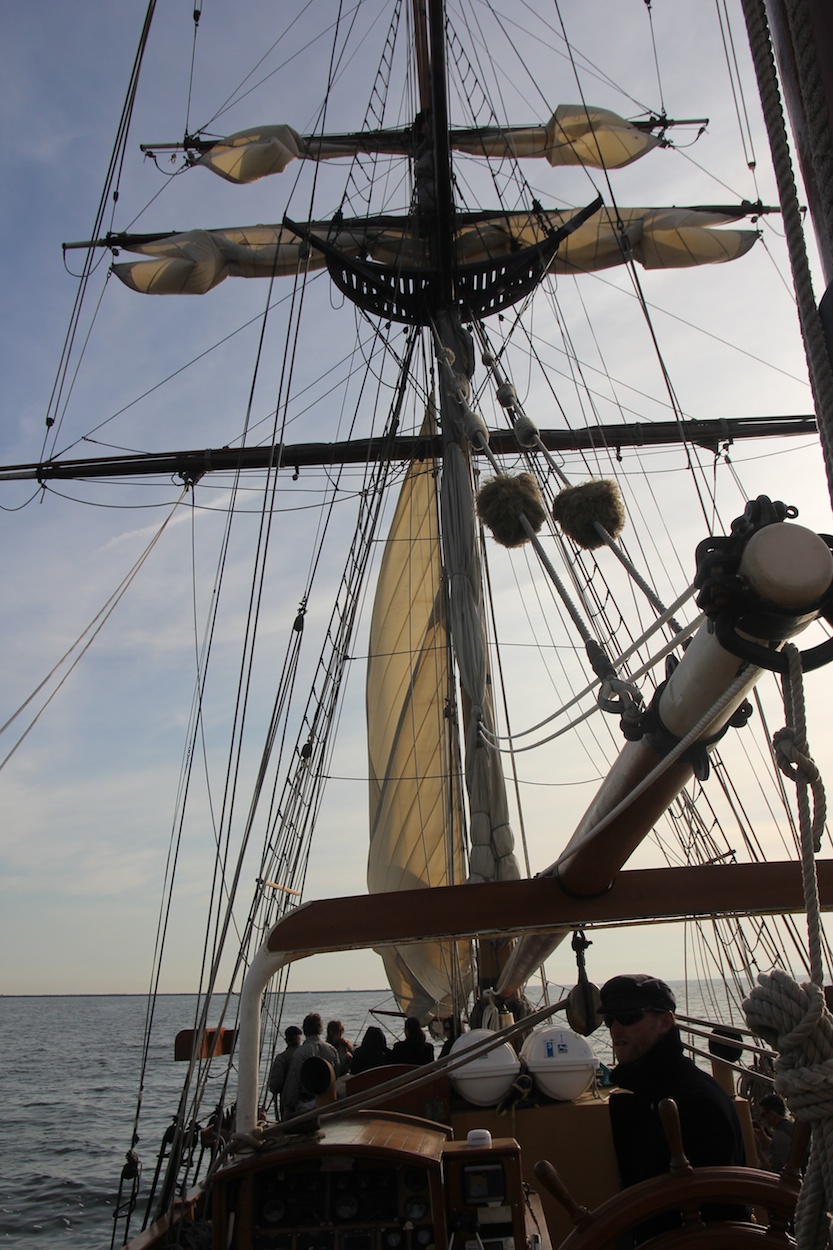
OK... We are undersail with the foresail
Did You Know? - Brig sails are named after the masts to which they are attached: the mainsail; above that the main topsail; above that the main topgallant sail; and occasionally a very small sail, called the royal, is above that.

Robin just relaxing
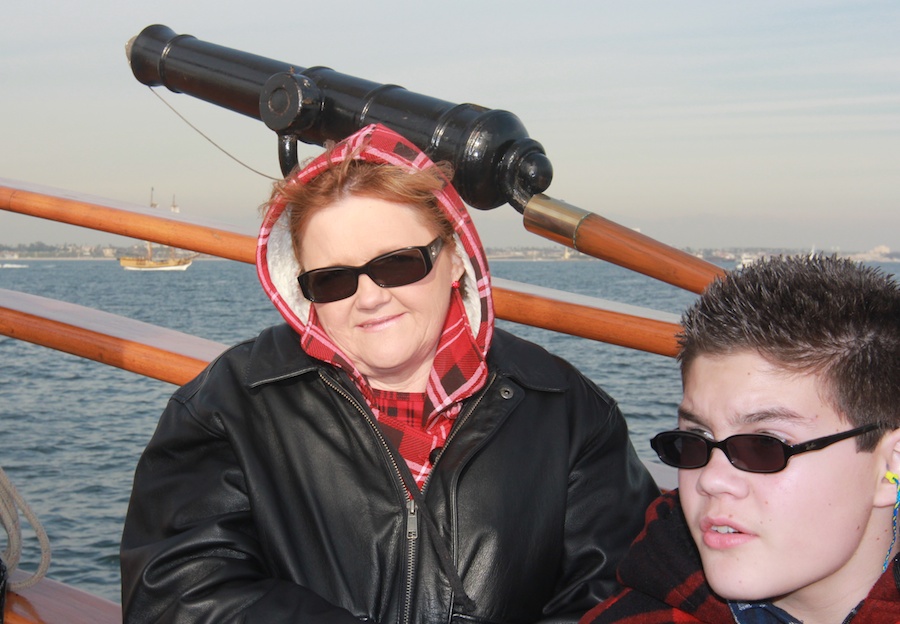
Nick is ready for the guns to fire
Did You Know? - The term swivel gun usually refers to a small cannon, mounted on a swiveling stand or fork which allows a very wide arc of movement. Another type of firearm referred to as a swivel gun was an early flintlock combination gun with two barrels that rotated along their axes to allow the shooter to switch between rifled and smoothbore barrels.
Swivel guns should not be confused with pivot guns, which were far larger weapons mounted on a horizontal pivot, or screw guns which are a mountain gun with a segmented barrel.
An older term for the type is "peterero" (alternative spellings include "paterero" and "pederero"). The name was taken from the Spanish word for "stone" (pedrero), because it was the first type of ammunition fired.

MAnually positioning thre boom
Did You Know? - In sailing, a boom is a spar (pole), along the foot (bottom edge) of a fore and aft rigged sail, that greatly improves control of the angle and shape of the sail. The primary action of the boom is to keep the foot of the sail flatter when the sail angle is away from the centerline of the boat. The boom also serves as an attachment point for more sophisticated control lines. Because of the improved sail control it is rare to find a non headsail without a boom. In some modern applications, the sail is rolled up into the boom for storage or reefing (shortening sail).

Now we are sailing...
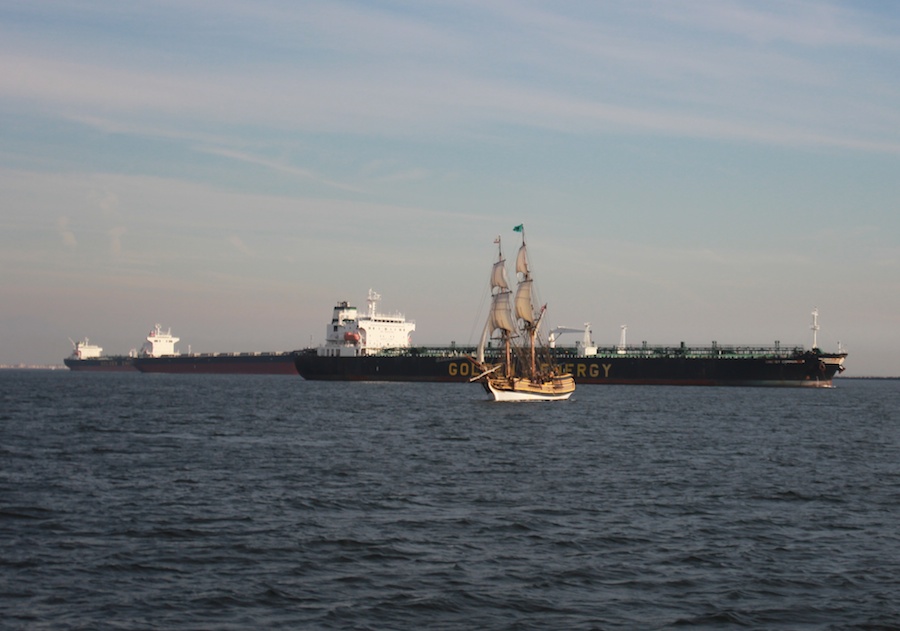
Out and about on the harbor...

Gearbulk...
Did You Know? -
The company, through its predecessor, was established by Mr Kristian Gerhard Jebsen and has been in operation since 1968.
Gearbulk operates the world`s largest fleet of open hatch gantry and semi-open jib craned vessels, purpose-built to carry forest products, non-ferrous metals, steel and other unitised breakbulk cargoes.
Such commodities have rigorous care requirements with respect to handling, stowage and ventilation. Control of conditions in the hold, plus daily inspection are critical. All the essential equipment and monitoring regimes are standard on these specialised Gearbulk vessels.
The Gearbulk fleet is primarily operated under contracts of affreightment. Gearbulk specialise in offering tailor-made transportation packages and also works with long term partners.
Interchangeability across the whole fleet offers customers valuable advantages with flexibility in logistics, routes and timing. This is reinforced by Gearbulk`s worldwide involvement in shore-based and floating terminal operations.
Gearbulk also operate a number of handymax and bulk carriers for the transportation of conventional bulk cargoes.
Our global network of regional and local offices are staffed with experienced senior management specialists who, together with other dedicated personnel are able to respond promptly to our customers requirements.
Diligent shore management monitors and directs the entire transportation process, providing on-the-spot follow-up through the global network of offices and agents. At the same time, highly professional sea staff work closely with shippers and receivers to provide the world-class service Gearbulk customers have come to expect.
Gearbulk Holding Limited is registered in Bermuda and is the parent company of the Gearbulk group.
Gearbulk (UK) Limited, a company registered in England (No. 2652901), is the UK agent of Gearbulk Management Limited, Bermuda as Manager of Gearbulk Pool Limited, and provides support services to the Gearbulk group.
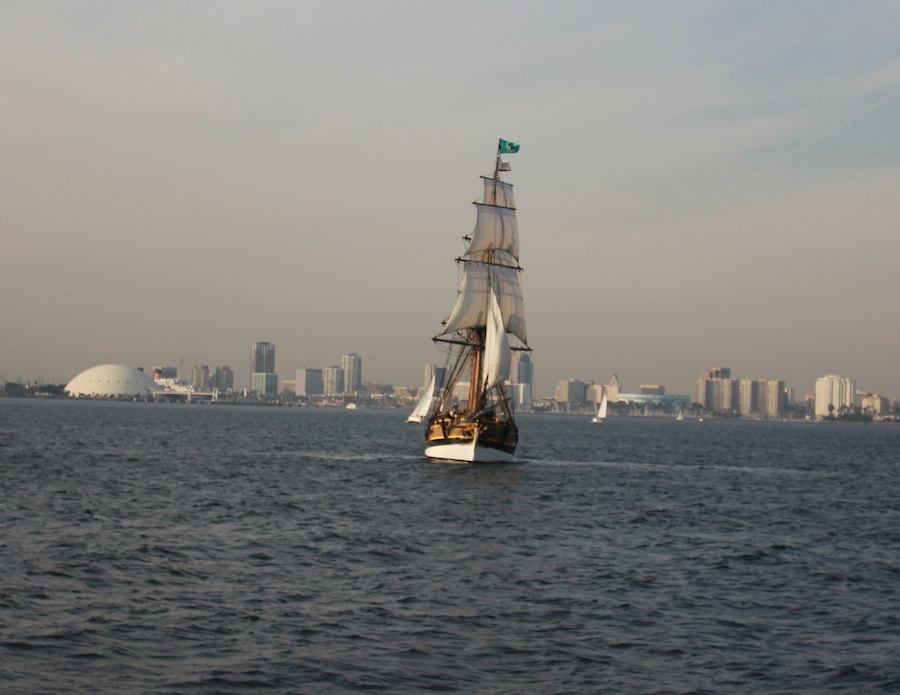
Sails up... The ship heels over
Did You Know? - Heeling is where a vessel tips sideways to some extent. The term is usually used in connection with the lean caused to a sailboat by the wind's force on the sails. A vessel may also heel if there is a greater load on one side than the other. This may happen if the cargo shifts or is not loaded correctly or if passengers or crew congregate on one side. In extreme cases, the vessel may lean so much that it capsizes.